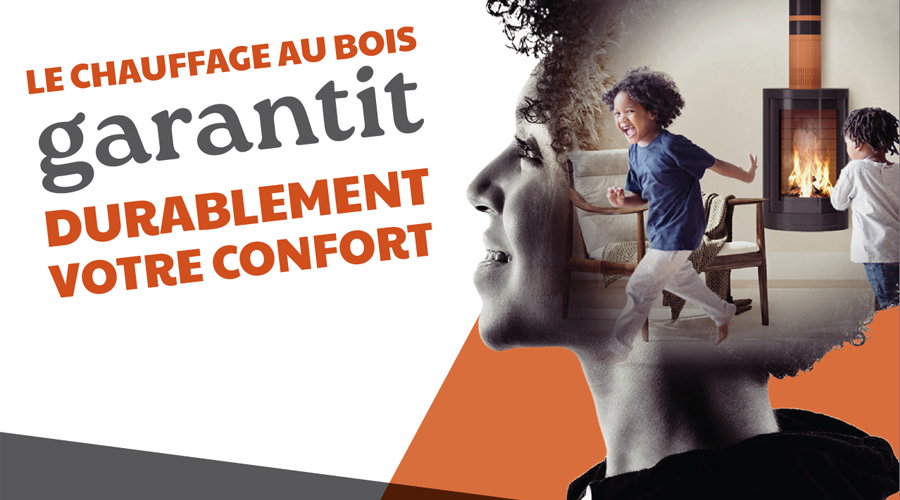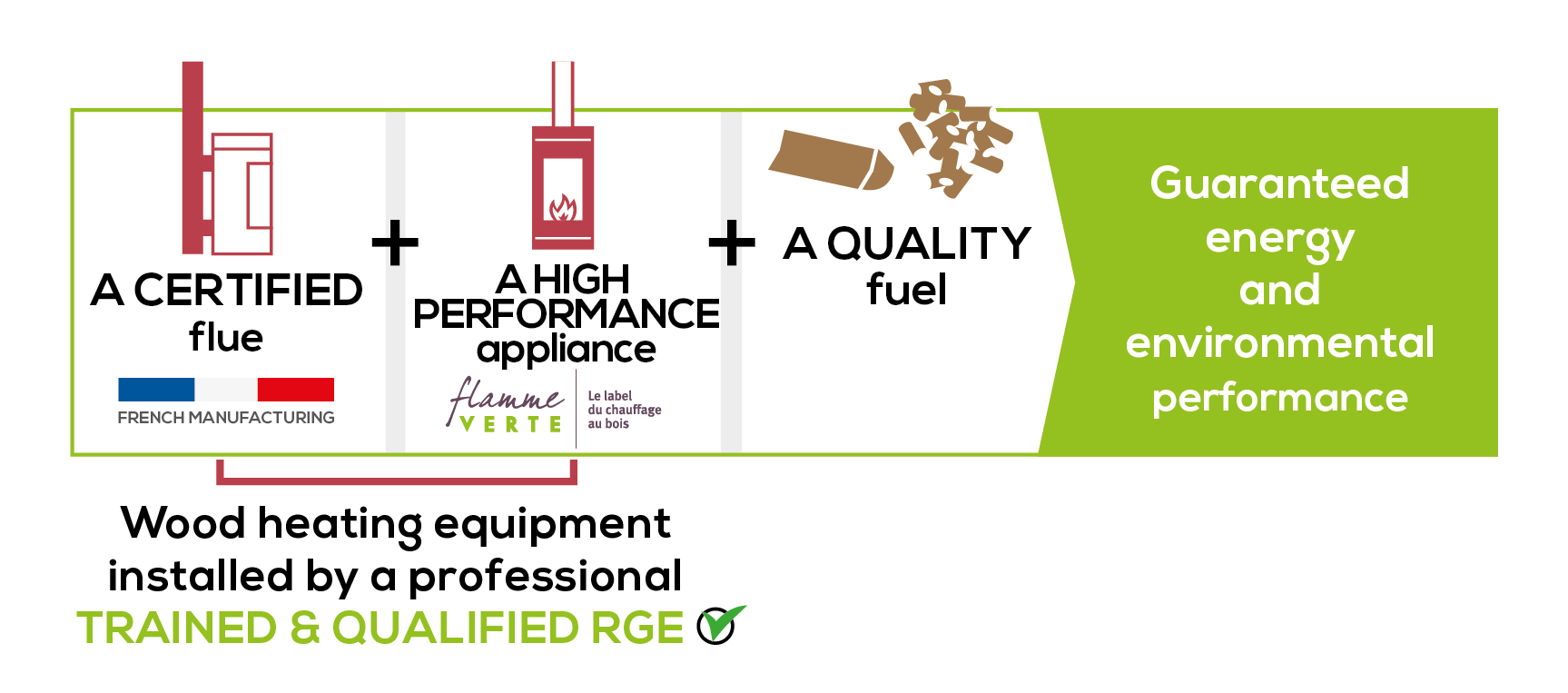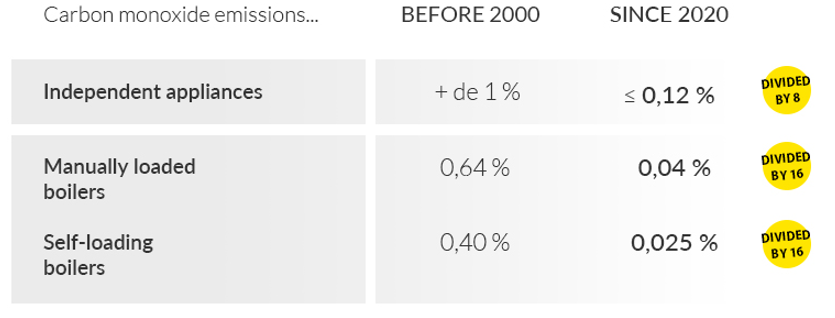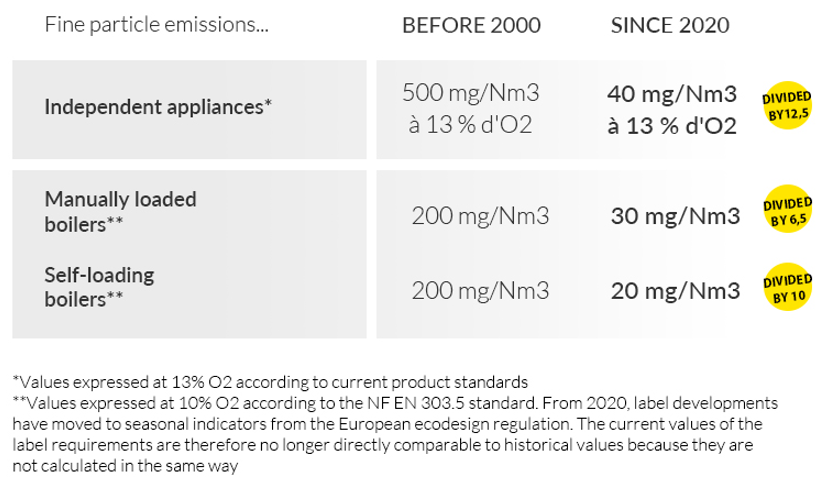Wood heating guarantees your lasting comfort
To guarantee your lasting comfort, you can always count on wood heating.

There was a time, now a long time ago, when wood heating was not yet spontaneously associated with the notions of energy efficiency or respect for the environment. Some people may still have a rustic and old-fashioned image of it. However, today's domestic wood heating has little in common with that of the early 2000s (and we're not even talking about open fireplaces whose efficiency does not exceed 10 to 15%).
In the category of wood-burning appliances itself, i.e. stoves, inserts, closed fireplaces, and boilers, technical and technological advances have brought this heating method into a new era. Add to this the improvement in the quality of the fuels used, better usage practices, evolving standards, increasingly qualified installers, and mandatory system maintenance, and it's easy to understand why wood heating has become one of the pillars of sustainable, responsible, and comfortable living.
What is comfort?
- Comfort is subjective. And when it comes to wood heating, this concept can mean a variety of things. Some people talk about thermal comfort, the feeling of well-being that wood heat provides. Others prefer to talk about ease of use, ease of operation, flexibility, and autonomy, reliability.
- In truth, it's all of these elements combined that we appreciate about wood heating. But other, more "quantifiable" criteria also allow us to measure how this heating method has evolved over time, thereby improving the comfort - in every sense of the word - of users.
Since 2000, impressive progress
- One indicator perfectly illustrates how appliances have improved: the evolution of energy efficiency.
- As a reminder, energy efficiency corresponds to the amount of energy used necessary to produce the energy consumed. In our case, it is the amount of wood energy needed to provide a certain amount of heat. The higher the percentage, the better the efficiency. When this percentage reaches 100, it means that the production energy has been fully used. There is no loss, no waste.
Between wood-burning appliances built before 2000 and the most recent ones, energy efficiency has jumped:
(Source: www.flammeverte.org/)
There are many technical and technological improvements that have contributed to improving these yields. For example:
- - Double combustion, which allows, thanks to a secondary air inlet, to burn the gases and particles resulting from the first combustion.
- - The sealing of somes appliances, in order to optimize the management of the combustion air (the air necessary for combustion) and the evacuation of smoke.
- - Fine-tuned regulation and automated of air flows, with real-time adjustment of air intake based on temperature, draft, or oxygen detectors.
The development of automation, control and piloting systems has also made it possible to improve temperature management, optimize consumption, better control heating periods, and therefore increase comfort.
Increased comfort and decreased wood consumption
- The evolution of appliances has another impact: our consumption of wood fuel. As explained in this article , it is estimated that wood energy consumption will decrease in the coming years while the number of appliances will continue to grow.
- This does not mean that we will heat less, no, it means that the further we go in time, the higher the energy efficiency of the appliances will be, and the less wood energy we will consume, for equivalent, or even superior, thermal comfort.
Reducing emissions, the other major step forward
The environmental performance of wood-burning heating systems is another reason to celebrate, as it affects air quality. On this point too, progress has been significant. In ten years, fine particle emissions have been divided by ten. By 2035, it is estimated that fine particle emissions will be divided by a further three, even though we will have gone from 8 to 10 million appliances.
Here is the evolution of emissions between 2000 and 2020:
(Source: www.flammeverte.org/)
State-of-the-art smoke exhaust flues
- This spectacular leap forward is also made possible by innovation in the field of chimney flues for wood-burning appliances. As housing standards evolve (BBC/RT2012 then RE2020, to name just a few), it accompanies the development and launch of new, more efficient appliances.
- Examples ? The Cheminées Poujoulat PGI system, developed for pellet stoves in 2007, is a pioneer in this regard, as is the EFFICIENCE triple-wall concentric flue launched in 2013... Two technologies that were completely new in their design at the time and have since become essential.
Quality wood makes the difference
- The use of dry wood (humidity less than 20%) and certified pellets is strongly encouraged because wood fuel plays a determining role in the performance of this heating method.
- A quality fuel maximizes energy efficiency, ensures consistent performance, minimizes emissions, guarantees clean combustion and therefore reduced fouling... In short, it is a real asset in the search for lasting comfort.
The installer, the keystone of a safe, efficient and durable installation
Hiring a trained and qualified RGE installer for your wood-burning heating project also guarantees lasting comfort. Thanks to their expertise, you benefit from tailored advice, access to certain financial aid (depending on the situation), correctly sized "high-performance appliance + certified flue" equipment, and an installation that complies with safety standards. Essential.
Legislation to support the sector and guide consumers
French and European legislation regulates and supports the wood-burning heating industry to balance energy efficiency, air quality, and the fight against climate change. By imposing strict standards on energy efficiency, pollutant emissions, and safety, by banning the most polluting equipment, and by making financial aid conditional on the purchase of efficient appliances, it guides consumers toward more efficient and cost-effective choices.
- It is to align the level of requirement with energy and environmental ambitions that the criteria of the Flamme Verte label and the EcoDesign standard evolve over time.
- This framework helps structure the sector, guarantee a quality offering, make wood energy a real lever for the energy transition... And therefore, guarantee your comfort in the long term.
*Source: Scenario established by the CERIC Laboratory in the study “Prospects for the domestic wood-burning appliance fleet” (Sept. 2024)














